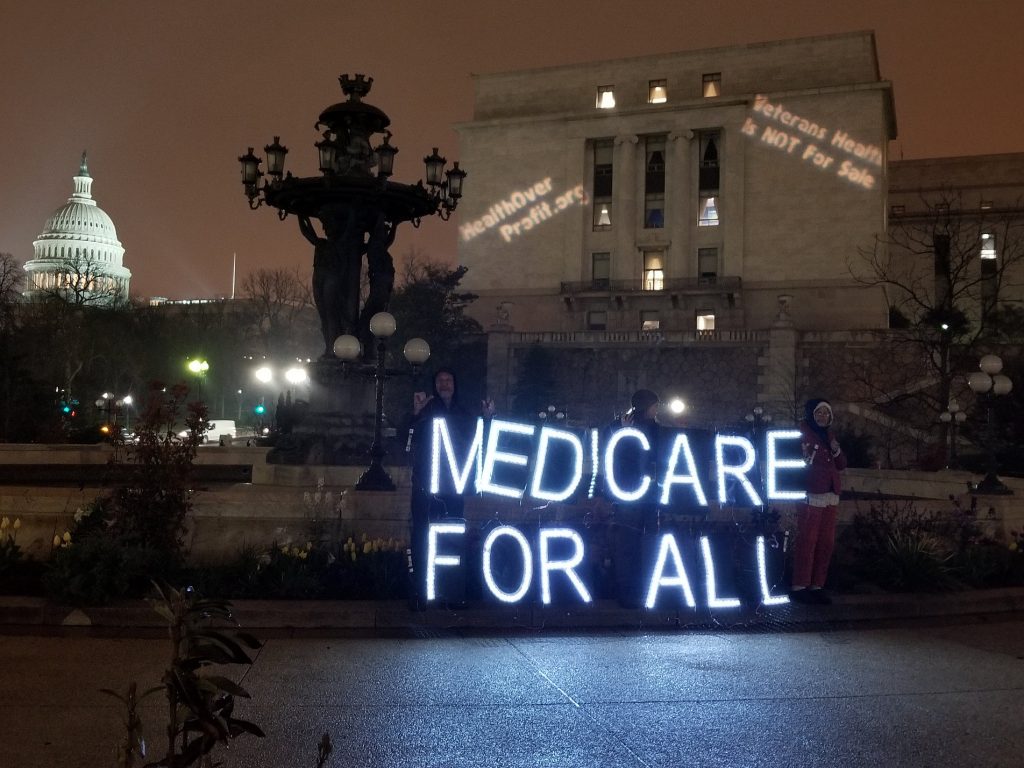Last week, I argued that any incremental age-based expansion of Medicare should start by adding everyone between the ages of 0 and 25 onto the Medicare rolls. This would move the ball forward on Medicare for All in a serious way by bringing a large group of people who are already not expected to pay for their own insurance into the system. In this piece, I provide an estimate of the cost for such a program and offer some suggestions for how to finance it.
Cost
The last time that CMS broke down aggregate health spending by age was in 2014. According to that CMS report, children between the ages of 0 and 18 account for 11.4 percent of the total personal health care (PHC) spending in the US. Young adults between the ages of 19 and 44 are responsible for another 21 percent of PHC spending. If you assume that ages 19 through 25 consume a proportional share of the 19-to-44 spending, which likely overstates the reality, then you conclude that the 19-to-25 age group accounts for 5.7 percent of total PHC spending.
Thus, we can estimate that people between the ages of 0 and 25 account for 17 percent of overall spending.
The next question is how much of that 17 percent is already being paid for by the government. Using the same method as above, but for Medicare and Medicaid spending specifically, generates the conclusion that 5.9 of the 17 percentage points is already being paid for, on budget, by the government. Bringing in tax expenditures on employer-provided insurance and exchange plans adds another 1.7 points that is already being paid for by the government. This means the total government share is 7.6 of the 17 percentage points and the non-government share is 9.4 of the 17 percentage points.
If you assume that Medicare for Kids will simply move that private spending onto government rolls without increasing or reducing overall expenditures on this age group in the process, which is consistent with the findings of most Medicare for All studies, then you can estimate the total fiscal cost of Medicare for Kids by multiplying national health expenditures (NHE) by 9.4 percent.
In 2022, NHE are projected to be $4.5 trillion. Multiplying that by 9.4 percent gets you $425 billion, which is 1.7 percent of the projected GDP in 2022. That is how much new government spending would be needed to implement Medicare for Kids. But it is worth emphasizing that this is not new spending overall as the new government spending is offset entirely by reductions in private spending for this age group.
Financing
Because 1.7 percent of GDP ($425 billion in 2022) is such a modest sum, there are many fairly easy ways to finance this program.
If one was committed to only raising taxes on the super-rich, then Bernie Sanders’s proposed wealth tax, which according to Zucman and Saez would bring in $393 billion in 2022, would be enough to fund almost the entire thing. The remaining $32 billion could be brought in with another rich-soaking tax like a financial transactions tax.
For a more balanced approach, you could start by charging the full payroll tax for earnings above $250,000 per year, raising $137.4 billion, and then get the remainder by increasing the employer side of the Medicare tax by 3.5 points gradually over the course of a few years.
If cutting spending is your game, then there is plenty of room to cut the military budget. Cutting the military budget down to 2 percent of GDP, which is our NATO obligation, would save $278 billion in 2022. That, combined with charging the full payroll tax for earnings above $250,000 per year, would get you almost to the full $425 billion initially and would get you all the way there over time as bracket creep pushes more and more income over the nominal $250,000 threshold.
It’s easy to come up with many different combinations of ways to pay for it. Medicare for Kids is not a technically complicated proposal or even a very “expensive” proposal in terms of fiscal cost. The question is only whether elected officials can summon the will to do it.

